
It felt rather alien yet bittersweet boarding an aeroplane abroad, after the coronavirus pandemic marked a two year period of not venturing away from UK soil. Back in late April, I ventured to northern Portugal for two weeks. I’d previously visited mainland Portugal once before, mainly sticking to the Algarve nearest the Spanish border and I’ve also travelled to the island of Madeira.
The first week of my Portuguese sojourn was spent exploring the beautiful, historic city of Porto and its surrounding area, as well as a trip to see a friend towards Leiria in the centre of the country. The second week was to be spent in the mountains to the east of Porto and cycling, of course, was on the agenda. Portugal may not hold quite the allure of cycling compared to France, Spain or Italy but as I came to discover, it is a hidden gem for cycling.

I stayed in the picturesque Mondim de Basto, a town at the epicentre of the cities of Amarante, Vila Real and Fafe. The town is domineered by the Nossa Senhora de Graça Sanctuary, a church at the top of its mountain. It is located close to the River Tâmega, a tributary of the more well-known Douro river, and lies in a valley at around a 160m elevation. The town is surrounded by mountains in every direction that hover around the 1,100m mark so it’s a great location for getting some hill training in. That elevation is about standard for Northern Portugal, with most of the mountains hovering under the 1,500m mark. If you want to ride in hillier terrain, the city of Covilhã and the Serra de Estrela national park would be your best bet, which peaks at around 2,000m and sees snow during the colder periods of the year.
I rented a Trek Émonda SL5 Disc 2022 for four days and got three memorable rides in, choosing to spend a day exploring in each direction of the town towards the major cities. I had to take a rest day between days 1 and 2, for reasons which will shortly become evident, and so didn’t head to the North West of the town.
Day 1 – Vila Real
Distance: 91km
Elevation: 2,103m
The plan for the first day was a ride to the city of Vila Real and looping back to Mondim de Basto. I’d woken up not feeling brilliant with a sore throat and a headache but partially put it down to having a fair amount of excellent Portuguese beer over the past couple of days. I took a paracetamol after a hearty breakfast and headed out.
The temperature was a warm 23 degrees and it was pretty humid. The first 30km of the ride was a climb up to the Alvão Nature Park that sits at 1,100m. The climb was generally picturesque but pretty unpleasant at the start as it averaged a seven percent with some steeper sections which then levelled off.

Almost immediately into the climb, I suffered a sharp cramp to my right thigh. I went through a period of suffering with cramps when cycling, particularly towards the end of a longer ride and it would tend to be on a climb. I’ve since made some changes and it hasn’t been a problem for around two years but as you’ll go onto read, this ride more than made up for it!
I wasn’t sure if I had cramped due to a poor position on a new bike, the fact I was testing some new Assos shorts for work which offer a more compressive fit or that I wasn’t feeling 100 percent. I pulled into a cafe in the small village of Bilhó around 15km up the climb to rest it a bit and see if that would help. I briefly considered turning back and aborting the ride but I have a very stubborn mindset and wanted to get my money’s worth out of the bike, as well as taking advantage of the warm weather as the rest of the week wasn’t forecast to be quite as balmy.
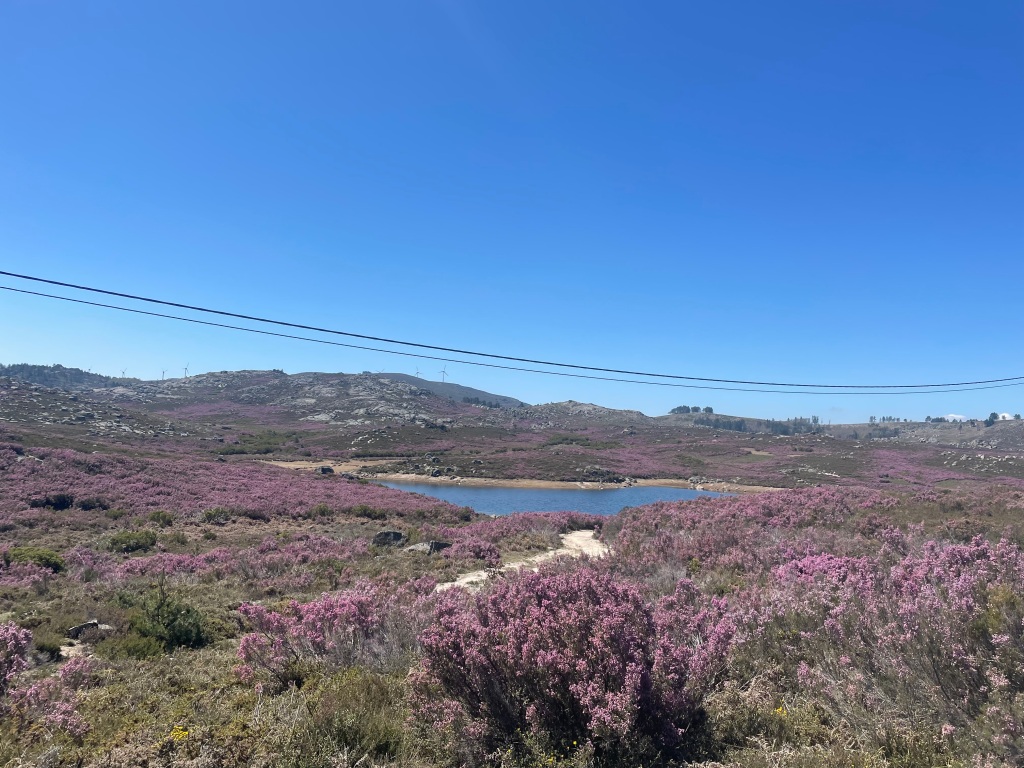
After the stop, I continued up the arduous climb, passing through several small villages and a serene woodland setting. Unfortunately, resting the cramp didn’t help and I had to make a stop every 2-3 kilometres or so as the shooting pain felt pretty horrific. The final third of the climb was fairly fierce in places with gradients around 13 percent but the beautiful view at the top of the natural park was worth the effort. If I’d had more time to spend in the area, I’d love to have tried some walking up here.
The descent to the city of Villa Real was 10km to just under 400m and was a fairly typical European-style descent, packed with hairpins. An aspect that would become a theme on future rides is that the Portuguese seem to relish having cobbled sections on the main road through villages or town centres. Some of these can rather sketchy on a road bike, even with 700x28mm tyres, which is heightened when descending. Some added spice was added to this particular descent with the inclusion of some steep cobbled hairpins.

Vila Real was a reasonable city with an attractive centre but I found it to be a little soulless in its suburbs. After a lunch stop, it was onto the second major climb of the day which was roughly 20km up to 900m. This climb wasn’t as scenic as the first and the roads were much quieter and the surfaces not quite as smooth.
Unfortunately, the cramp continued to play up and I had to make regular stops to rest it, including a drink stop at the village of Campeã, its small centre a vibrant hub for the locals. I was in a pretty foul mood all the way up until I reached the top of the climb and there were a few moments where I questioned my life choices!

My bad mood instantly vanished as I crested the top of the climb and was welcomed by the most majestic of views, which more than made up for the low points of the day. I was now to enjoy a circa 30km gradual descent back to Mondim de Basto and I think it instantly became my favourite descent I have ever ridden. The views just kept on coming, each topping the last. The road was perfectly surfaced with no cobbled sections and the turns were gradual and could be seen in advance, so I barely had to touch the brakes. The cramp mysteriously suddenly vanished too!
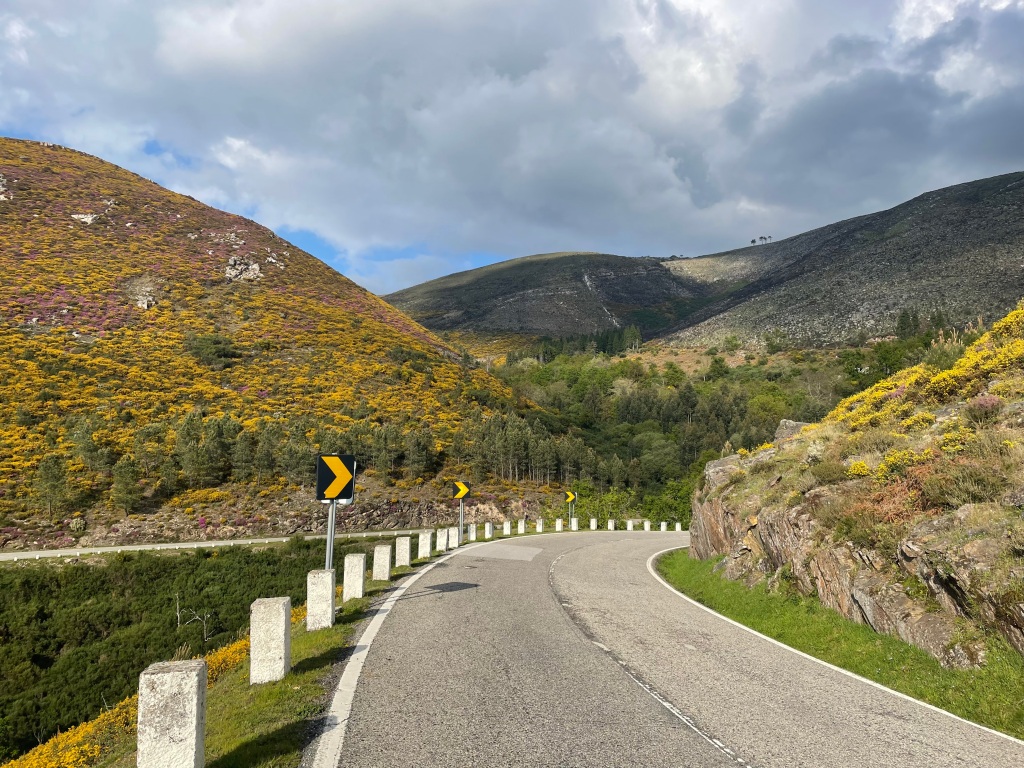
There was a brief climb of around 100m after the initial 12km and the road then headed down again back to the centre of Mondim de Basto. Today was character-building but the final descent more than made up for the first 60km of punishment.
Day 2 – Amarante
Distance: 79km
Elevation: 1,004m
Today was to be an easier ride with less than half of the elevation after I didn’t feel brilliant on Day 1 and the sore throat had not abated, despite having a rest day too.

Heading the opposite way out of Mondim de Basto to Day 1 was breathtaking crossing the River Tâmega and shortly afterwards, my Garmin prompted me to turn right up what looked to be a gravel track which then joined a buttery smooth disused railway line, the Ecopista da Linha do Tâmega, or in English, the Tâmega line.
I have a particular fondness for exploring disused railways and in the UK, I’m fortunate to have lived within riding distance of both the Phoenix Trail that links the towns of Princes Risborough and Thame in Buckinghamshire and the Downs Link, which links Guildford to Shoreham-on-Sea. I now live in Bristol, which is surrounded by various paths, most notably the Bristol to Bath railway line which I use to commute to work on three days a week.

However, the Tâmega line blows everything I’ve ever ridden in the UK out of the water and then some. The views were terrific as the path skirts along the river, through a variety of terrain from lush green vistas to backdrops reminiscent of Monument Valley. There are various old train stations along the route, which have been lovingly maintained with gorgeous architecture. You just couldn’t ask for more and I’d never have discovered this path without the presence of a bike. I got to enjoy the path for 30km down to the city of Amarante.
Amarante itself is a wonderful city with beautiful architecture and a grand cathedral, its imposing yet graceful presence felt across the city. The River Tâmega flows through the city and there’s a tranquil path to walk alongside the river bank.
After a drink in the centre, the second half of the ride was to climb up to 600m, passing through the town of Lixa and then reaching Castelo de Arnoia before descending back to Mondim de Basto.
The route took me along the main road out of Amaranate, which was nothing special as it started to gently wind up in gradient, before turning onto a quieter main road to tackle the rest of the climb. One highlight was passing a closed night club that was humorously named ‘Sin City’.

The climb wasn’t particularly scenic but the town of Lixa was pleasant enough and in keeping with other nearby towns, it featured a cobbled surface through its centre. The roads were quieter after Lixa and more scenic as the climb made its way through a couple of peaceful small villages, which were shaded by woodland.
Castelo de Arnoia was another highlight with a quaint castle domineering the village and some chocolate-box cafes, so I took the opportunity to make a stop.
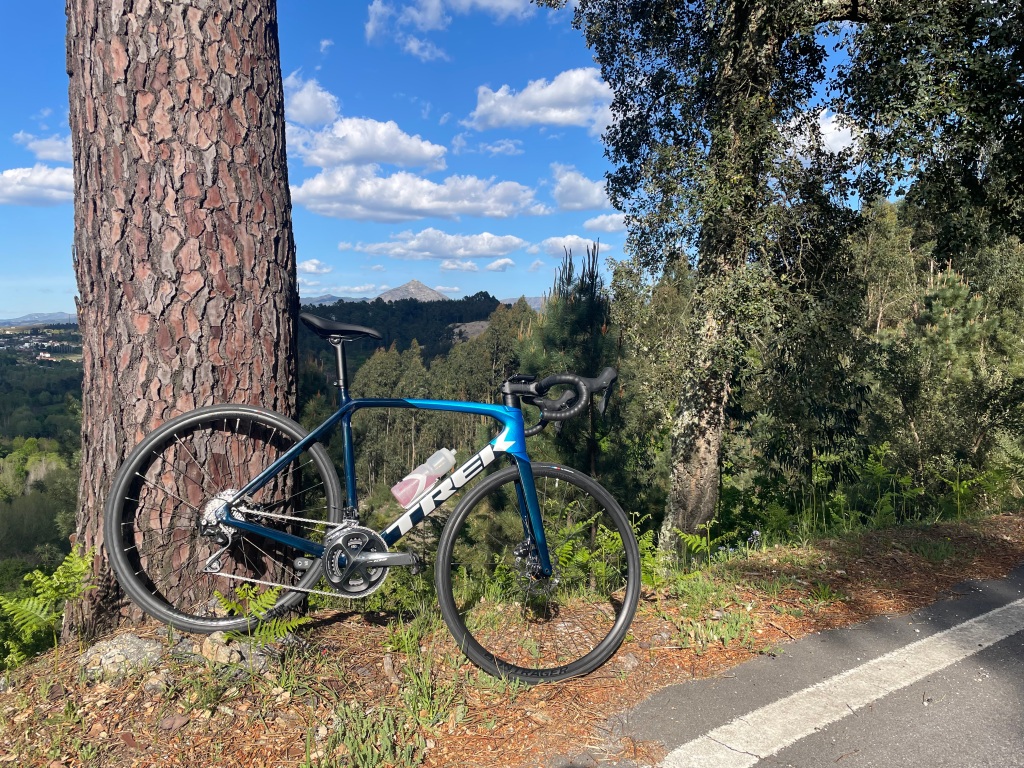
The descent back to Mondim de Basto was another breathtaking one and similar to Day 1, the turns were visible and gradual so braking could be kept to a minimum. I passed through Celorico de Basto towards the end of the descent, another pretty town which the Tâmega Line passes through in its outskirts, before passing back over the river into Mondim de Basto.
Day 3 – Fafe
Distance: 74km
Elevation: 1,273m
This was my final day with the bike and unfortunately, my cold was now full-blown. On any other day, I’d have kept away from the bike but given I had already skipped a day between the first two days, I was determined to get my money’s worth out of the rental.
The original plan was to head to the city of Fafe and slightly further afield up to a lake further north called the ‘Praia Fluvial de Albufeira de Queimadela’. However, I tweaked the route as I wanted to ride the rest of the Tâmega line and as I felt less than ideal, I didn’t want to overdo it. Rain was also forecast from lunchtime, which I was keen to avoid. 74km and circa 1,300m of elevation is not an insignificant amount on a normal training day, let alone when you’re feeling under the weather.

After crossing the River Tâmega, I took the same gravelly path right up to the disused railway and headed in the opposite direction towards Arco de Baúlhe, where it finishes. The railway path was just as glorious heading north as it was south to Amarante yesterday. The first five miles or so were gently uphill before a descent down the rest of the path. The path is slightly more shaded heading northbound and there are even several houses gardens that sit next to the path. In keeping with the section of the path I had ridden yesterday, this section was similarly blissful.

Arco de Baúlhe, the end of the Tâmega Line, was a highlight with a staggeringly beautiful train station that is an attraction in itself, with a section of train track at its terminus, adorned with older unused trains that seemed in good condition.
At the end of the line, I headed out via the train station into the town centre, which was also rather pleasant with a selection of cafes but as rain was forecast, I chose to carry on. I was now to start the first climb of the day, a 17km affair which would rise to 700m before dropping back down to 500m and then heading back up to 650m before descending to the city of Fafe.
The climb wasn’t particularly scenic as it was on a main road in its early sections and I took the climb very easy and kept hydrated to keep my cold under control. The 200m descent after the peak was a particular highlight as it swept through some shrouded woodland. The 12km descent into Fafe was good fun, with a now customary cobbled section through a village towards the bottom. It was at this point of the ride it started to rain, so I headed for a drink in the city centre.
Fafe is a fairly well-kept city with a pleasant centre, although Amarante is far and away my pick of the cities that Mondim de Basto is sandwiched between. It drizzled throughout my stop but luckily, the rain calmed down as I left to ride the final section of the ride. This was to be another climb up of 10km up to 750m before a 19km descent back to Mondim de Basto.
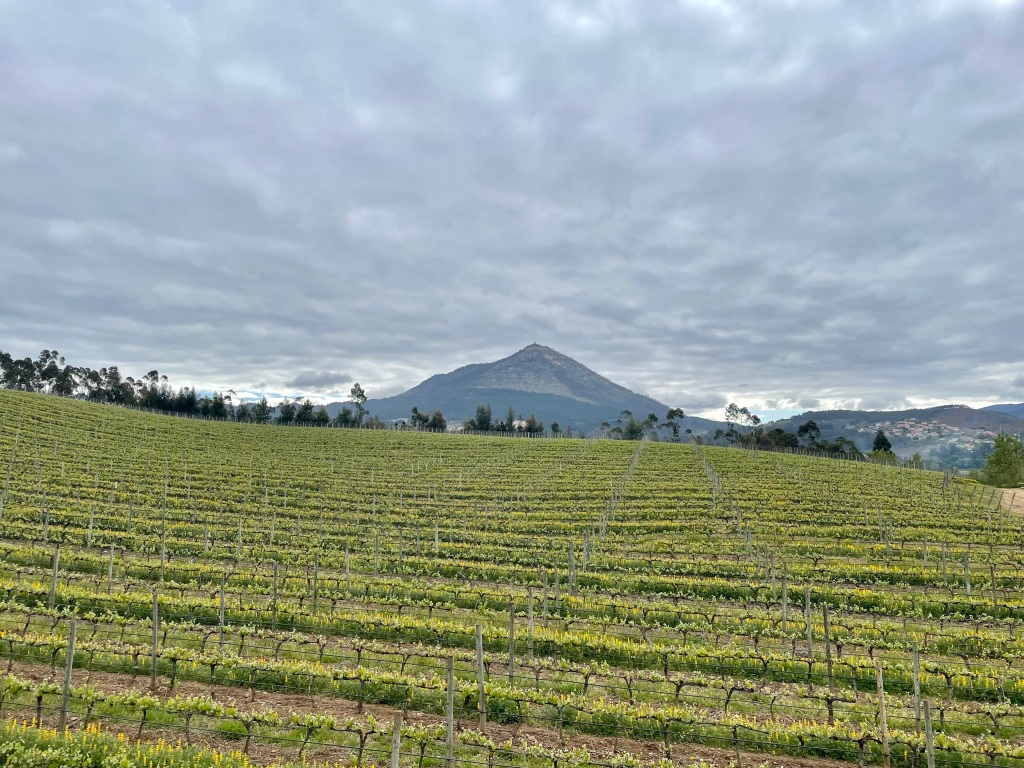
In keeping with the first climb of the day, it wasn’t particular scenic until its later sections which featured more greenery. The descent, on the other hand, was wonderful. It was fast and flowy but like other descents, with turns easy to anticipate. The descent passed through the village of Gandarela de Basto which left a quaint impression and then snaked under the A7 motorway. The second half of the descent was in keeping with the first back to Mondim de Basto and luckily, I had managed to mostly avoid the rain throughout the ride, although it was still forecast to bucket down for the rest of the day.
Whilst I didn’t feel great and riding with a cold is always to be advised against, I’m glad I rode today. This ride wasn’t as scenic as the first two but getting to ride the rest of the railway path and the final descent made it more than worth it.
Summary
Cycling isn’t as prominent a sport in northern Portugal as it is in other European destinations. Other than a handful of small groups that I spotted throughout my stay, the sport doesn’t seem to have taken off in this region of Portugal.
That’s also reflected in the bike rental options in this region and after a fair amount of research, I found a grand total of two rental companies, both of which were based in Porto, that offered carbon road bikes to rent. I had originally factored in driving to Porto and back to pick them up but luckily, the company I went with dropped off and picked up the bike for a fee.

Bicycle rental pricing is quite punchy in Northern Portugal – I paid €200 for four days and then an additional fee for drop-off and pick-up. I would typically pay around the €130 – 150 mark for an equivalent bike for the same duration in Italy, for example.
The drivers aren’t as accustomed to cyclists either compared to other European destinations and some of the overtaking wasn’t the most considered. I’d love to return to the region and explore further afield and without the poor luck of riding with a developing cold.
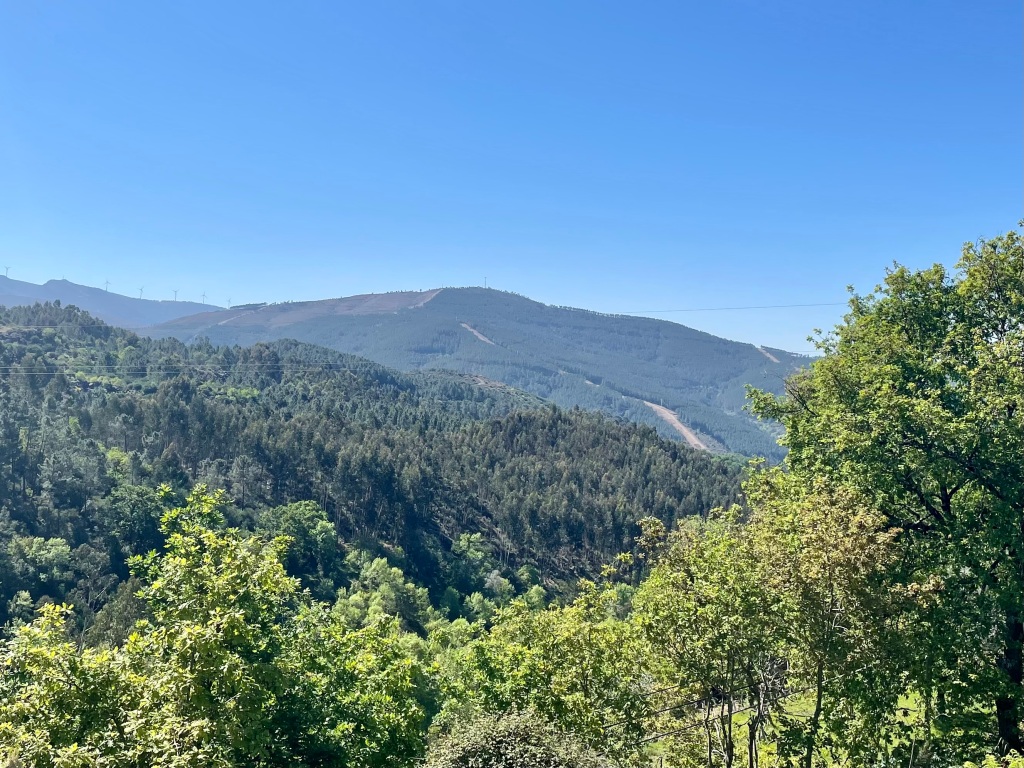
With its well surfaced roads, visually arresting vistas and breathtaking descents that aren’t packed with hairpins, Portugal is a tucked-away treasure for road cycling.


Thanks for this! I will be traveling to Northern Portugal this November, and your post provided useful information about the Tamega line which I plan to do from Amarante to Arco de Baúlhe and back.
LikeLike
Excellent, you’re in for a treat!
LikeLike